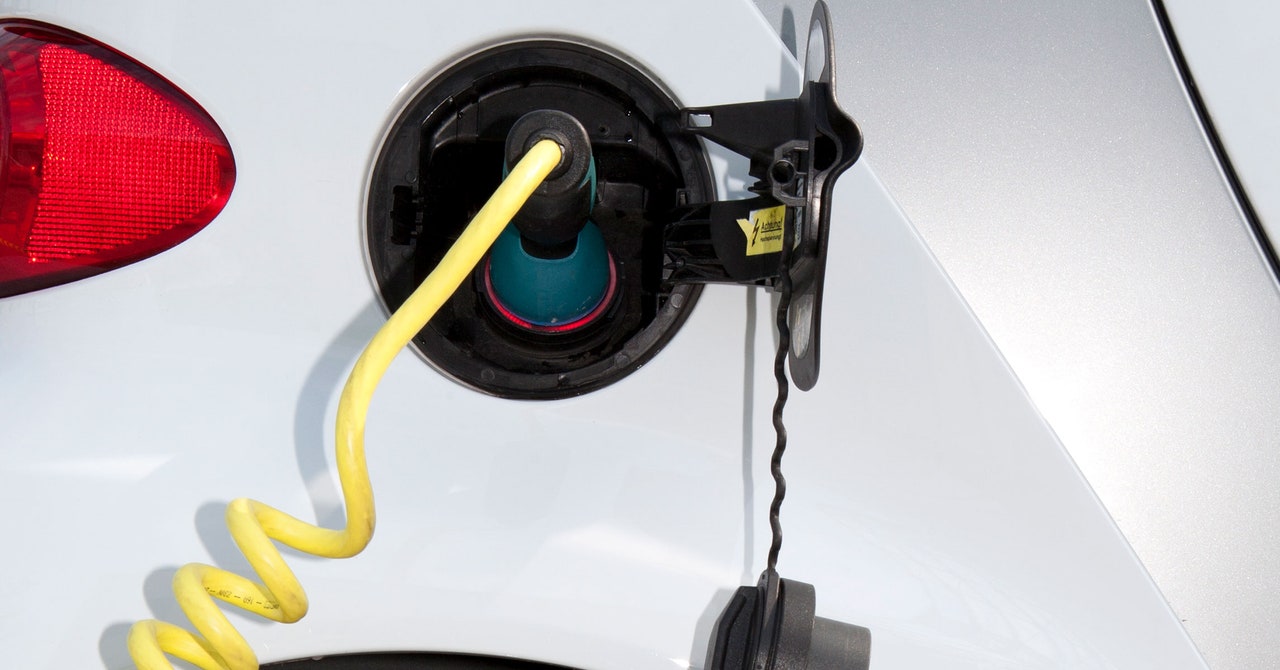Issam Mudawar, a professor of mechanical engineering at Purdue University, has been solving heat-related emergencies for 37 years. They often follow a pattern. Anyone who dreams up a supercomputer, or new avionics for a fighter jet, will eventually face the same problem: Fancy electronics, packed with trillions of transistors, generate tremendous amounts of heat. So the dreamers come to Mudawar, the guy who studies thermal management for a living. “It always seems that cooling is the last thing people think about,” he says.
A couple of years ago, Mudawar was approached by Ford with a more humble problem: a charging cable. Like other automakers, Ford is in a race to deliver electric vehicles that power up quickly. But there’s a problem with moving electrons faster: It brings the heat. If the goal is to charge up your electrical vehicle in, say, five minutes, that extra current meeting resistance means temperature-related problems inside the battery and out. The cord, in particular, becomes a superheated bottleneck.
Mudawar has been solving a problem that doesn’t really exist yet. The US Department of Energy has defined so-called “extreme” fast charging as adding 200 miles of range within 10 minutes. This is reachable with existing charging stations and cables, the capabilities of which batteries have yet to max out, in part because of their own heating concerns. Mudawar’s work meanwhile anticipates a future when filling up a car with electrons can perhaps even rival the convenience of the gas pump.
Recently, the trend in electric vehicles is that bigger is better. Automakers now target 400 miles of range as an antidote to “range anxiety,” while at the same time they are electrifying staples of American roads—Chevy Silverados, Ford F-150s, Hummers. Massive cars plus massive range requirements mean totally giant batteries. Unsurprisingly, this comes with a trade-off: Charging up those big batteries takes extra time. The fastest option might be getting a full charge in 30 or 40 minutes from state-of-the-art highway chargers, which account for about 5 percent of EV fill-ups, according to the DOE. Mostly, though, these cars are designed for drivers who can plug in at home and let that massive battery charge up all night.
Combining the two is difficult, explains Ahmad Pesaran, an energy storage expert at the National Renewable Energy Laboratory. A phrase like “five-minute charging” means something very different if you’re charging a 200-kilowatt-hour battery, like the one found in a Hummer, versus the 40-kwH battery in a Nissan Leaf. Those big batteries need far more energy, and they have structural barriers that make charging itself hard to do quickly. That will likely require new chargers and battery strategies, fancy new cables, maybe even upgrades to the transmission lines that power the chargers so they can handle a massive spike in demand. “I question the wisdom of why we need to have 500-mile range in an electric car and also want fast charging in five minutes,” he says. “Where do you want to go? How many times do you need to do that?” But, he adds, it might just be inevitable.
Currently, most cars can’t take advantage of the most powerful charging stations we already have, says Chao-Yang Wang, a battery researcher at Penn State University. The reasons are found mostly within the battery itself, most notably a phenomenon called lithium plating. When batteries charge up, lithium ions nestle inside an anode made of graphite. In an effort to pack more energy into batteries, this material has been engineered to be pretty thick, so it can hold more ions. But this becomes an obstacle for charging. As the current gets more intense, those ions can’t get inside the thick anode material fast enough. So instead they build up on its surface as lithium metal—they plate. And once that happens, there’s no going back. The battery gradually loses access to those ions, and so loses its ability to charge up fully.

































